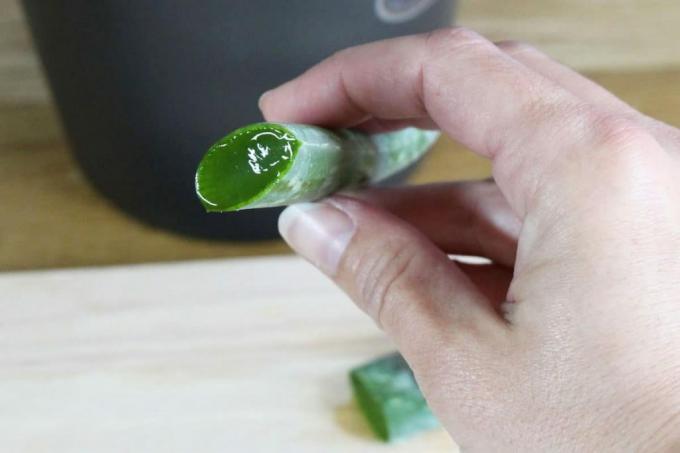
table of contents
- Aloe Vera Edible?
- Edible parts
- 3 edible types
- Aloe arborescens
- Aloe barbadensis
- Aloe ferox
- frequently asked Questions
Aloe vera is particularly popular in the cosmetics industry. But can you really eat the plants of the aloes genus?
In a nutshell
- Some aloes are edible, others are highly poisonous
- only certain parts of the edible aloes are suitable for consumption
- Gel extraction is of great importance
- Process aloe vera gel in smoothies, salads, juices or mueslis
Aloe Vera Edible?
The genus of aloes consists of numerous species. These differ in that some representatives are poisonous and others are edible. The plant has been popular in medicine for some time. Some species can make a useful addition to the diet.

Note: The ingredient aloin is considered laxative. As a result, many preparations are only available from pharmacies.
Edible parts
With the non-toxic plants, you cannot eat all parts. Certain components are poisonous and can cause discomfort. If the wrong parts are used, you will suffer severe poisoning in the worst case. Correct preparation is therefore important so that there are no health risks. The delicious juice lies between the leaf green and the leaf pulp of the aloes. Before ingesting the gel, you should rinse it off with water.
Note: The core inside the leaf is the water reservoir of the aloes and is edible. It is said to have a healing effect.
3 edible types
Not all types of aloes are poisonous. Below you will get to know three representatives that you can eat with a clear conscience.
Aloe arborescens

- known as Baumaloe
- bare trunk
- Leaf rosette at the last end of the stem
- less known in Europe
- grows as a shrub
- up to 1.5 meters high
- narrow leaves with small teeth
- bright and red flowers
- resistant to low temperatures
- popular as a medicinal plant
Aloe barbadensis

- known as aloe vera
- Trunk up to 55 cm tall
- long leaves with green and white spots
- yellow and orange flowers between April and August
- popular as a medicinal plant
Aloe ferox

- dull green leaves
- healing properties of the plant
- Trunk grows up to three meters high
- Leaves up to 80 cm long
- horny spines on top and bottom
- red flower clusters that are over a meter tall
- Aloin is powerfully laxative
- Poisoning only with overdose
- there are better tolerated alternatives
frequently asked Questions
Typical for the plant is the growth of the leaves from the inside out. The outer leaves of the plants die continuously, making them ideal for producing gel. After cutting, you can position the sheets vertically. The bitter juice then flows off automatically. In the following you can win the gel in three steps. Divide the leaves crosswise and cut them in half. The gel can then be pressed out of the leaves
Basically, you should only harvest as many leaves as you need. However, the pieces of leaf can safely be kept in the refrigerator for a few days.
There are numerous minerals and vitamins in the leaf. Among other things, vitamin E, magnesium and zinc are found in the aloes. As a result, this is ideal for a diet supplement provided you are not allergic to it.
There are different ways of using it. On the one hand, you can prepare a smoothie, muesli or porridge. On the other hand, the gel also tastes delicious in salads or juices.
